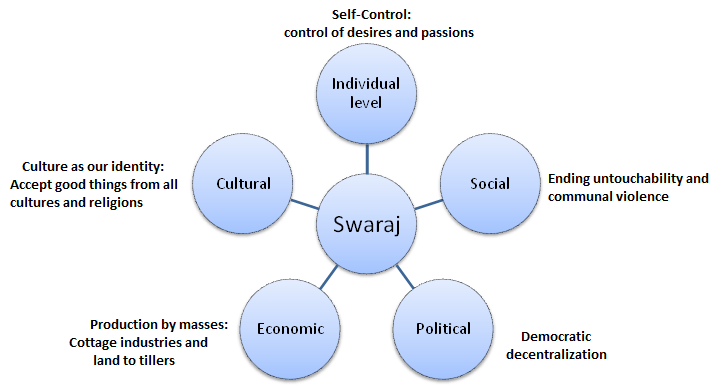Indian Economy
Growth Models for Rural India
This article is based on “Lessons for Yogi from Gandhi and Lee” which was published in The Hindu on 16/06/2020. It talks about the relevance of ideas of Mahatma Gandhi and Lee Kuan Yew for contemporary India.
Globalisation has made life easy for migrant capital (foreign investments like FDI, FII, etc.), not for migrant labour. This can be reflected in the recent migrant crisis that emanated from Covid-19 pandemic. Also, the pull factor for migration i.e employment opportunities has been severely affected due to such pandemic.
Therefore, the need is to attain self-reliance, especially in rural areas. Rural areas are the main source of providing migrant labourers. In this context, India can take some lessons from Lee Kuan Yew, the founding father of modern Singapore, and from Mahatma Gandhi, the father of the Indian nation.
Singapore Model of Development
- Lee Kuan Yew is known as the founder of modern Singapore, which was founded in 1965.
- Under three decades of his leadership (1965 to 1990), the former British colony of Singapore got transformed from a poor fishing hamlet into a global financial hub and economic powerhouse.
- A key plank of Lee’s model from the beginning was to attract foreign investment by assuring investors world-class infrastructure, an efficient administration, and low taxes.
- In return, he did not want multinational companies to merely set up labour-intensive assembly factories, rather he wanted the companies to train Singaporeans to do higher-value work.
- According to Lee, humans are not tools to produce returns for investors; rather, money is a tool to produce benefits for humans. Thereby, people of Singapore would earn more and the country would become fully ‘developed’.
- The ultimate measure of Singapore becoming fully developed was not the size of its GDP, but the incomes of its citizens.
- In order to address the roadblocks (crony capitalism, corruption, political interference etc) to an efficient market economy, he established mechanisms to ensure honest and accountable governance.
Gandhian Economics
- Issues related to rural areas in India are more complex than Singapore. The Gandhian vision of Poorna Swaraj becomes important in this context.
- According to the Gandhian idea of Poorna Swaraj, in order to become fully independent, people in India’s villages need to have economic and social freedom.
- Gandhi believed that the economy must serve human needs, rather than human beings becoming fodder for the GDP.
- The major principles of Gandhian economics that can be applied in the Indian economy:
- Enabling Gram Swaraj: According to Gandhi, the progress of human beings and local communities must be the means for economic growth.
- Further, the governments must be strengthened at the local level, in villages and cities.
- Concept of Trusteeship: The concept of trusteeship as enunciated by Gandhi, demands non-possession. It seeks individuals to dispossess their wealth and income beyond their requirements so that the economic welfare of the less capable is realized.
- According to him, wealth is good, but wealthy people must be only trustees of a community’s wealth and not its owners.
- Formation of Co-operatives: The alienation of owners from workers must be reduced with the creation of new models of cooperative capitalist enterprises, where the workers, not remote capitalists, or the state, are owners of the enterprises.
- Focus of Sarvodaya: The government must focus on the well-being of the poorest and weakest member of society.
- Enabling Gram Swaraj: According to Gandhi, the progress of human beings and local communities must be the means for economic growth.
Way Forward
The health crisis and the economic crisis emanating from Covid-19 have prompted governments at all levels, whether international, national or state, to strive for self-reliance. India, under recently launched, Atma Nirbhar Abhiyan envisages self-reliance. This can be achieved by the confluence of ideas of Mahatma Gandhi and Lee Kuan Yew. Following factors become significant in this context:
- Syncing Skills with Business: The government must encourage private investors to play a critical role in skill up-gradation and subsequent employment of India’s Youth.
- Giving tax incentives for those firms who help in skill up-gradation may be a step in the right direction.
- This will not only help in making the trickle-down effect possible but also leverage India’s demographic dividend.
- Democratic Decentralization: There is a strong need for providing functional autonomy to grassroots democracy at Panchayati raj institutions and urban local government.
- Ensuring Accountability: The government should initiate reforms under Part XIVth (Services Under the Union and the States) of the Indian Constitution which makes it difficult to dismiss corrupt officials.
- Also, governance policy must be committed to implementing systems that continuously attract the best talent to politics and governance.
One thing of course, that India can reject from the teachings of Lee Kuan Yew is the limits to freedom of expression and its limited democracy that depended critically on having one good person at the helm. Also, Gandhi’s averseness to technology which very much defines the past, present and future, is much debated today.
Gandhian Concept of Swaraj
|
Drishti Mains Question "Covid-19 pandemic has shown the lacunae associated with the current economic model that focuses more on GDP rather than human and local economics". In light of this statement, discuss the growth model that can be adopted for self-reliant rural India. |
This editorial is based on “Too Many Taxes” which was published in the Indian Express on June 16th, 2020. Now watch it on our Youtube channel.





